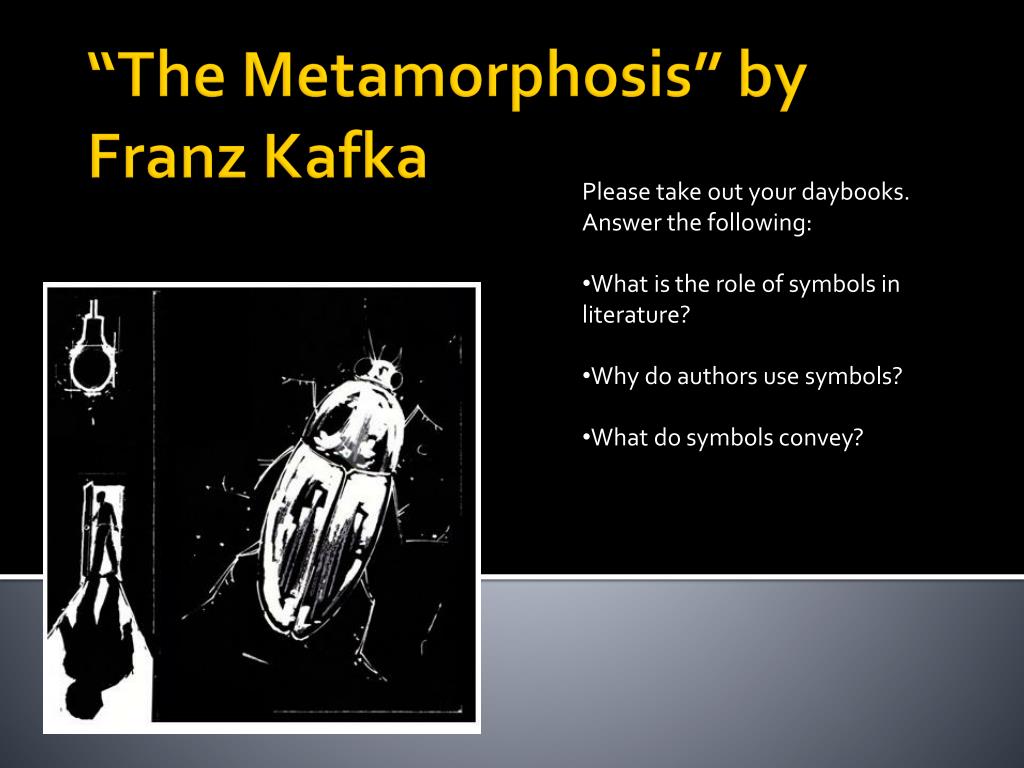
Works of this period are usually filled with the same confusion and strangeness that readers have come to love in The Metamorphosis. There is no meaning in the world except for that which we create. It was based on the idea that human beings are responsible for creating the meaning of their life. This is a philosophical and artistic movement that was at its peak in the late 1900s. Kafka’s use of Gregor’s situation embodies many of the fundamental elements of Existentialism. He wakes up one morning that is like every other morning, except for the fact that he’s been transformed into a giant bug, usually depicted as a cockroach. When you think of The Metamorphosis it is likely that the first thing that comes to mind is the absurdity of Gregor’s situation. The Metamorphosis by Franz Kafka Visual Representation

He burnt up to 90% of everything he published, even leaving a note for his friend to burn his remaining works (which included The Trial and The Castle) after he died. Today, little of Kafka’s full oeuvre remains. Kafka died ten years later after contracted tuberculosis. It had been written several years earlier over a brief period of three weeks.

He published The Metamorphosis when he was thirty-two years old. First, because his job was deemed essential and later because he contracted TB. Despite this, he did not fight in the war. During his youth, the First World War broke out after Franz Ferdinand was assassinated in 1914.


Unfortunately, things only get worse from there and the last days of his life are filled with guilt, suffering, and fear. It follows Gregor Samsa, a traveling salesman who wakes up one day to discover that he’s been transformed into a giant insect. The Metamorphosis by Franz Kafka is a disturbing and thrilling book that leaves a reader with more questions than answers.


 0 kommentar(er)
0 kommentar(er)
